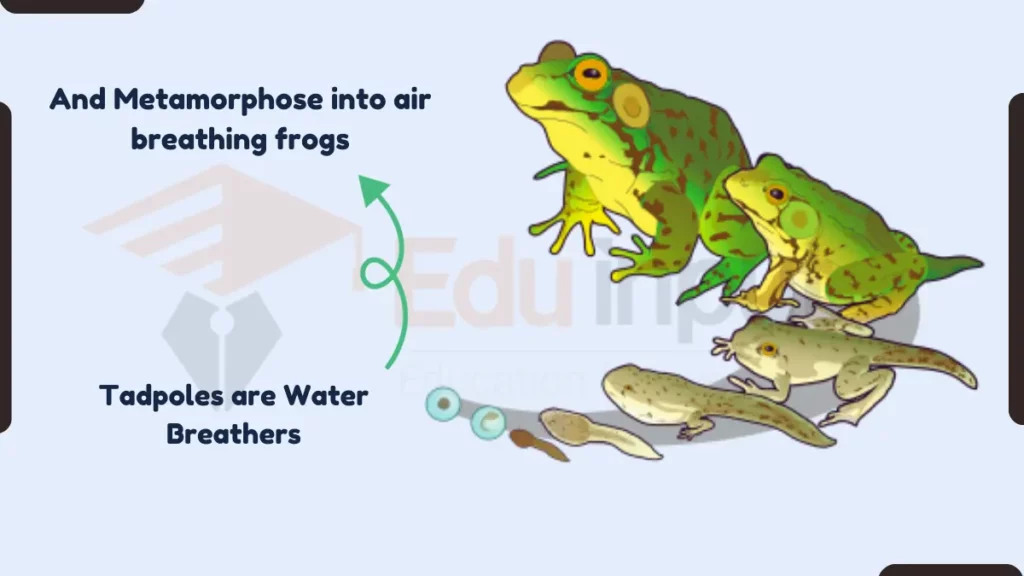Transition in Respiratory System during Amphibian Metamorphosis
The respiratory system of amphibians changes dramatically during metamorphosis. Tadpoles, the larval form of amphibians, breathe primarily through gills. As tadpoles metamorphose into adults, their gills gradually degenerate, and their lungs develop.
Adults of most amphibian species breathe primarily through their lungs, although the skin also plays a role in gas exchange.

Also Read about Respiratory System, and Ear Of Amphibians
How Respiratory system change in amphibians during metamorphosis?
1. Gills
Tadpoles have three pairs of internal gills, which are well-developed and highly vascularized.
During metamorphosis, the gills gradually degenerate and are eventually replaced by lungs.
2. Lungs
The lungs of amphibians are paired, sac-like organs that begin to develop early in metamorphosis. They do not become functional until the tadpole is ready to leave the water.
The lungs of amphibians are relatively simple in structure, consisting of a series of air sacs that are connected to the bronchi.
3. Skin
The skin of amphibians is involved in gas exchange throughout their lives. However, the skin of tadpoles is more permeable to oxygen and carbon dioxide than the skin of adults. This is because tadpoles have a thinner layer of keratin on their skin.
During metamorphosis, the skin of tadpoles thickens and becomes less permeable to gases. This is one of the adaptations that allows amphibians to transition from living in water to living on land.
Also read about:

 written by
written by 

Leave a Reply